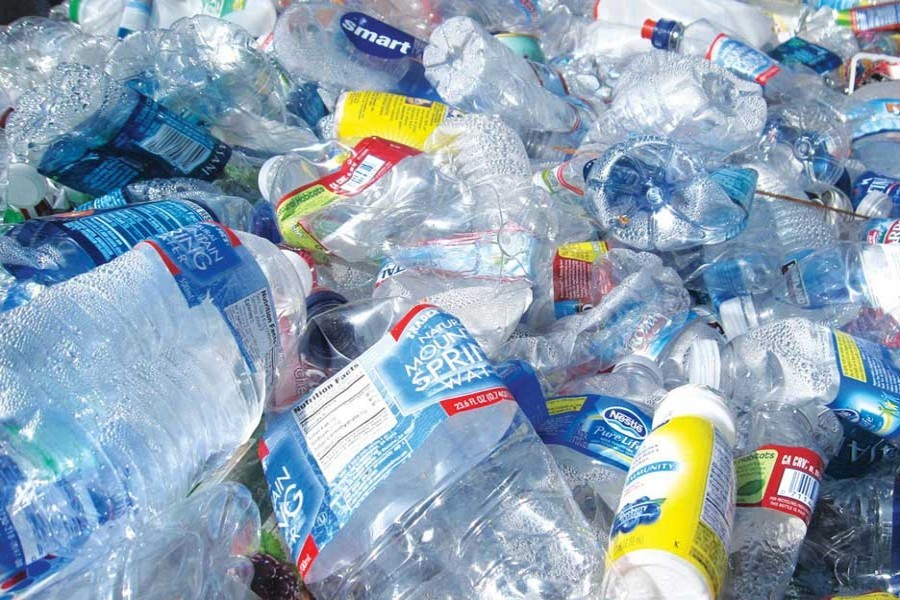There are three menacing aspects to the environmental challenge that we are manifestly embedded with-thanks to deposits of non-bio-degradable plastic -polythene wastes.
The first aspect is the magnitude of the accumulation: Through the world's ten river basins 800 thousand (80 lakh) metric tonnes of polythene wastes pass to the Ocean floor. The Ganges, Brahmaputra and Jamuna rank the fifth largest carrier of the wastes.
According to a report by Environment and Social Development Organisation (ESDO) , 650 thousand (65 lakh) tonnes of plastic waste is deposited on ground and under water in Bangladesh. Per day addition to that figure is put at 3000 tonnes. Identifying plastic and polythene bags as a veritable threat to environment, the private monitoring organisation reveals a dreadful fact: Whereas the rate of organic waste is around 5.2 per cent that of plastic waste is at 7.5 per cent.
The second deeply concerning factor is that most of the plastic has got enmeshed with land and water, and we have no mechanism as yet to separate them out and recycle them into new products. So we are exposed to menacingly harmful intrusion of Di-oxine and Hydrogen Cyanide into our bodies. It is through vegetables and fish that it enters the food chain.
Due to plastic wastes, research shows a spike in the incidence of Asthma, lung cancer, liver problems and skin diseases. Actually, ESDO has found plastic grains in the stomachs of domestic animals and fish.
That unfortunately turns out to be portrait of a nation that stood out in 2002 for pioneering a ban on use and production of polythene. The irony doesn't end there; Bangladesh is now the 12th largest exporter of plastic products. And having lost the battle, we don't mind being shamed by the existence of over 100 poly bag producing factories. In 2010, however, we made a law for use of jute bag as a wrapper of merchandise. Evidently, it is swamped by the ubiquitous plastic.
Such palliatives can't work against an habitual affliction made up of convenience and feather-light weight wrapped around a commodity carried with ease! More to the point---whether by default, or through or a force of habit reinforced by impunity culture-- hundreds and thousands of people live off the plastic trade, like it or not!
So the approach to battling it would have to be circumspect, pragmatic and fail-proof. Luckily, we have seen a vastly stepped-up campaign on the just-concluded World Environment Day for coming to grips with the apocalyptic resurgence of plastic and polythene worldwide. So much so that we may look around to take a leaf of a global manual that is not only shaping but also promising practical solutions for containment of an environmental menace that could only exacerbate climate change effects.
Rather than wasting any more energy or risking failure on trying to flog a dead horse of a ban on plastic or striking at the root by way of 'cutting head to rid ourselves of the headache', here is what we can do: The companies which sell soft drinks in plastic bottles or mineral water or something else in plastic or polythene containers, could collect the containers at a nominal price in order to have them recycled into newer products.
It is pertinent to note a development from Brussels, the European Commission on Monday whilst proposing a ban on single-use plastic products put the burden of cleaning up the waste on manufacturers in an effort to reduce marine litter.
The European Union (EC) doesn't stop short at that as its proposal requires EU countries to collect 90 per cent of single-use plastic drink bottles by 2025. And producers are tasked to help cover costs of waste management and clean-up.
Something along this line will have to be thought of, and acted on, if necessary on a gradual but time-bound basis. After all, it is not rocket science!


